March 3, 2020
Life in motion: the fastest and slowest creatures on our planet
Movement is one of the basic properties of living beings. The way they move and how fast they move depends on their body structure and lifestyle. We offer you a look at the fastest and slowest representatives of fauna that live on earth, in the water and in the sky.
On the ground
The fastest land animal is the guepard. In the wild, it can be found in Africa and the middle East.
Due to the peculiarities of its body, the guepard is able to accelerate to 110 km/h in 3 seconds from a state of rest.This is an ideal runner. He has a slender, lean body with almost no fat deposits, a small head with rounded ears and high-set eyes for better aerodynamic streamlining. In addition, the guepard has a wide chest and a large volume of lungs, which allows it not to suffocate during intense running.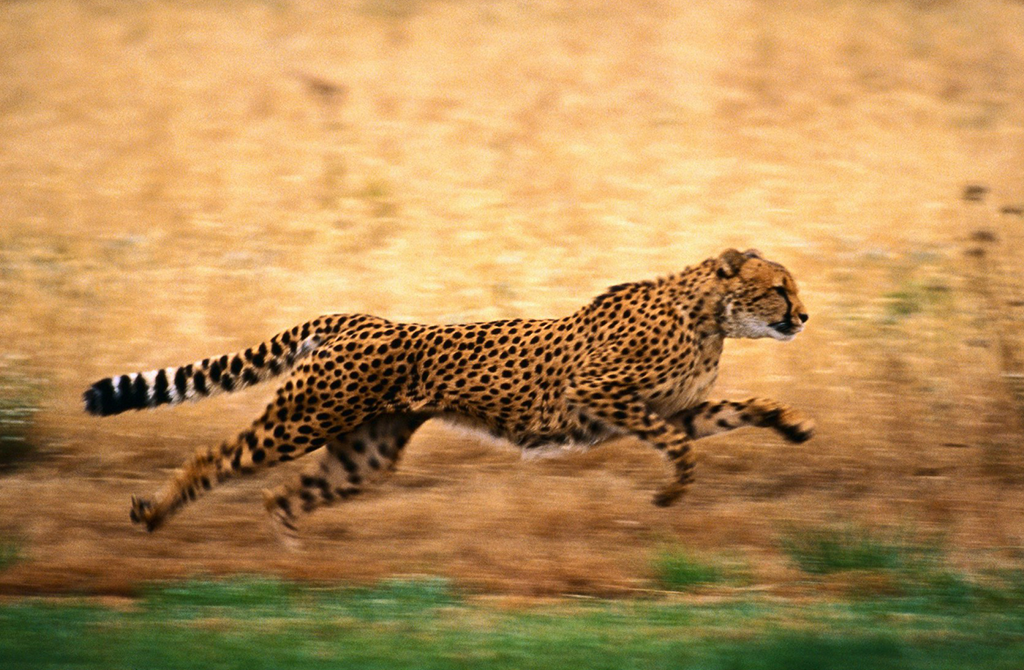 This speed is necessary for the beast to hunt successfully. The victim has almost no chance to escape fromthe guepard at a short distance. But these predators can't climb trees. However, antelopes, too, so that guepards this utterly not prevents.
This speed is necessary for the beast to hunt successfully. The victim has almost no chance to escape fromthe guepard at a short distance. But these predators can't climb trees. However, antelopes, too, so that guepards this utterly not prevents.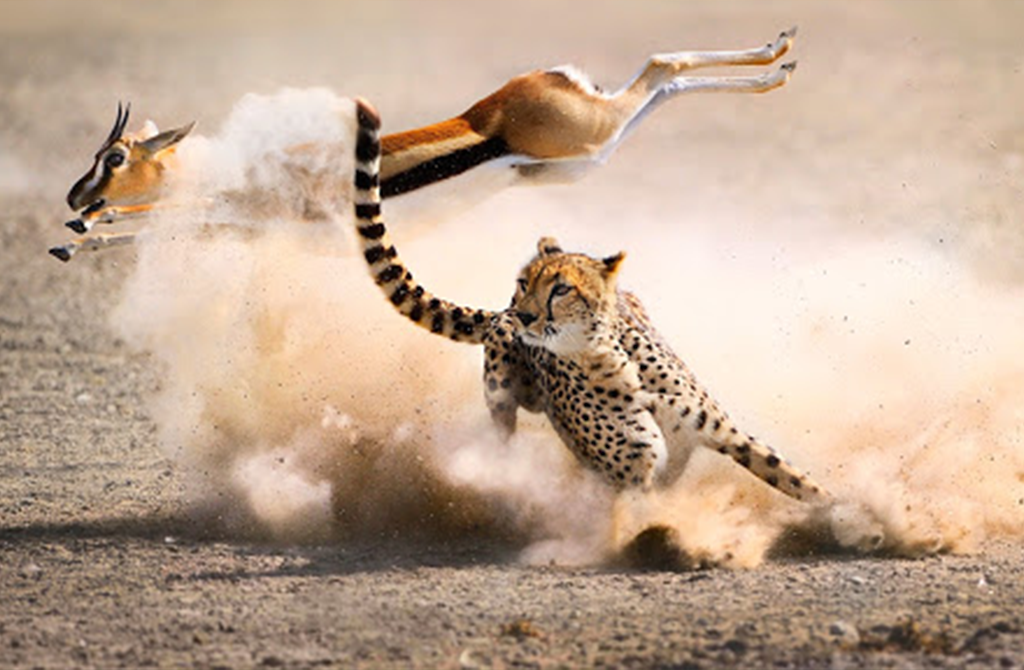 Thanks to their outstanding hunting data, cheetahs have been tamed and used for hunting since ancient times (from the third Millennium BC). Hunting cats were among the rulers of India, Egypt, Persia, and even Kievan Rus. In the courts of the Russian princes were special people – sailboats or gepardni who cared for them. The only problem was that cheetahs practically do not breed in captivity, so we constantly had to catch, tame and train new animals.
Thanks to their outstanding hunting data, cheetahs have been tamed and used for hunting since ancient times (from the third Millennium BC). Hunting cats were among the rulers of India, Egypt, Persia, and even Kievan Rus. In the courts of the Russian princes were special people – sailboats or gepardni who cared for them. The only problem was that cheetahs practically do not breed in captivity, so we constantly had to catch, tame and train new animals.  The slowest animal of vertebrates is the sloth. Its main principle is energy saving. Sloths spend most of their lives in trees, hovering on a branch that they cling to with their long, curved claws. The main food of these animals is green leaves. They are low-calorie and take a long time to digest. Sloths can digest lunch for up to 90 hours, and therefore have to save energy. They move through trees at a speed of 3M / min, on the ground (sloths go down about once a week to go to the toilet) – 1.5 m/min.
The slowest animal of vertebrates is the sloth. Its main principle is energy saving. Sloths spend most of their lives in trees, hovering on a branch that they cling to with their long, curved claws. The main food of these animals is green leaves. They are low-calorie and take a long time to digest. Sloths can digest lunch for up to 90 hours, and therefore have to save energy. They move through trees at a speed of 3M / min, on the ground (sloths go down about once a week to go to the toilet) – 1.5 m/min.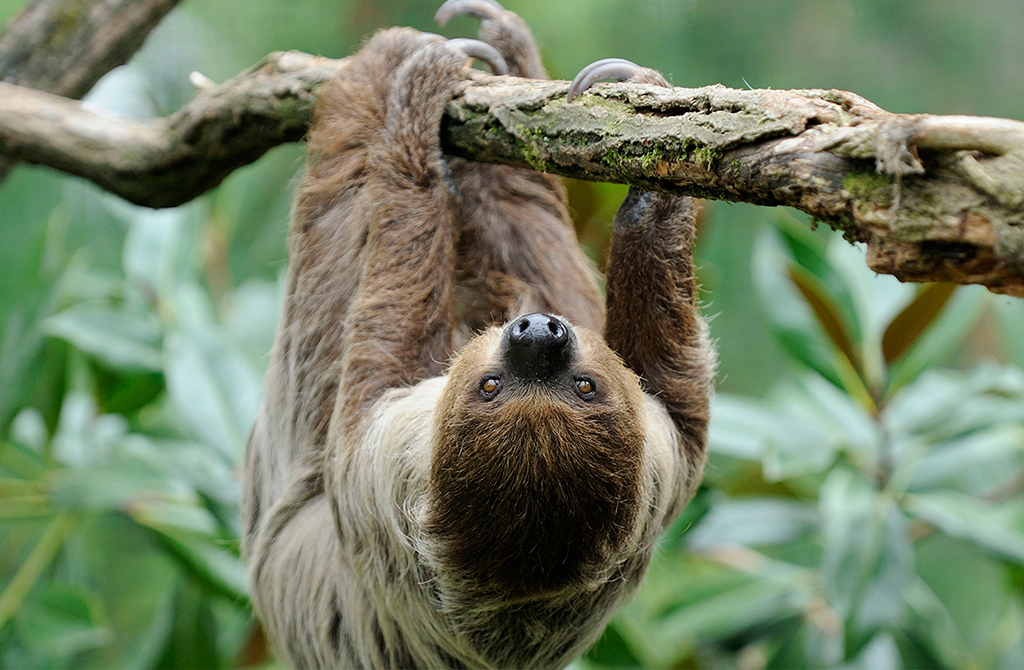 In the process of evolution, sloths abandoned one of the important adaptive mechanisms that mammals have – a system of heat regulation that requires large amounts of energy. This limits their habitat: they can only live in the hot climate of the tropics. At dawn, the animals climb to the tops of trees to bask in the morning sun, and when it gets hot, they descend into the thick foliage to hide in the shade. This behavior is more common in reptiles than in mammals.
In the process of evolution, sloths abandoned one of the important adaptive mechanisms that mammals have – a system of heat regulation that requires large amounts of energy. This limits their habitat: they can only live in the hot climate of the tropics. At dawn, the animals climb to the tops of trees to bask in the morning sun, and when it gets hot, they descend into the thick foliage to hide in the shade. This behavior is more common in reptiles than in mammals.
In the sky
The first place among the inhabitants of the sky is shared by the peregrine falcon and the needle-tailed swift.
The needle-tailed swift is the champion of horizontal flight. This small bird weighing about 100g with a wingspan of 50 cm, living in Asia and Australia, is able to accelerate up to 170 km / h. This speed helps the dog to hunt for insects and escape from predators.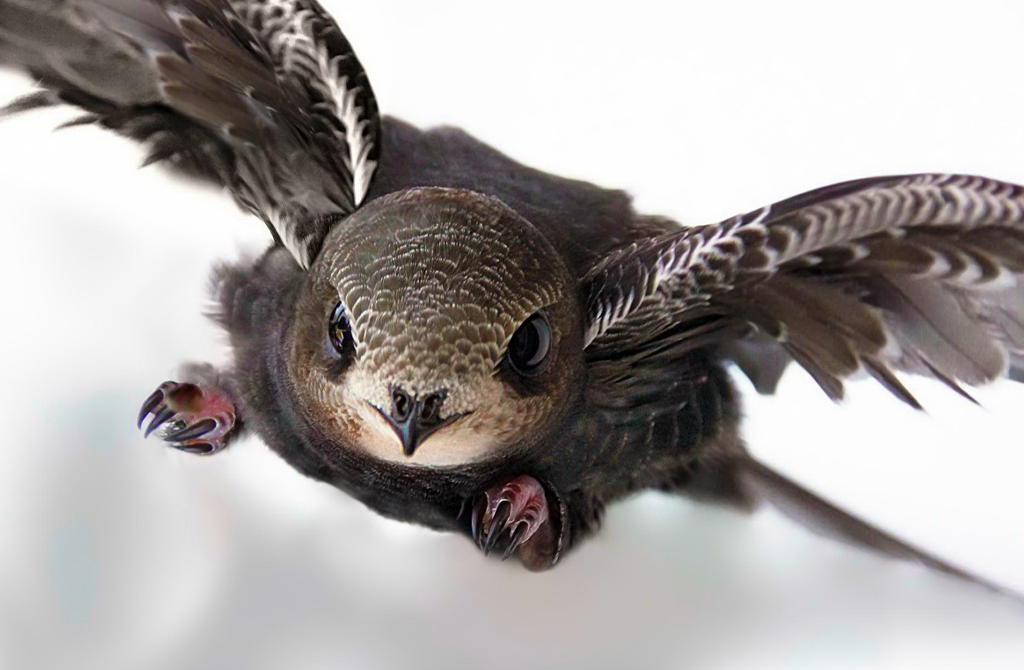 The king of vertical flight is the peregrine falcon. Swooping down on the prey, it develops, according to various data, a speed of 300 to 360 km/h. The force of the blow with folded paws is such that it can literally take off the victim's head.
The king of vertical flight is the peregrine falcon. Swooping down on the prey, it develops, according to various data, a speed of 300 to 360 km/h. The force of the blow with folded paws is such that it can literally take off the victim's head.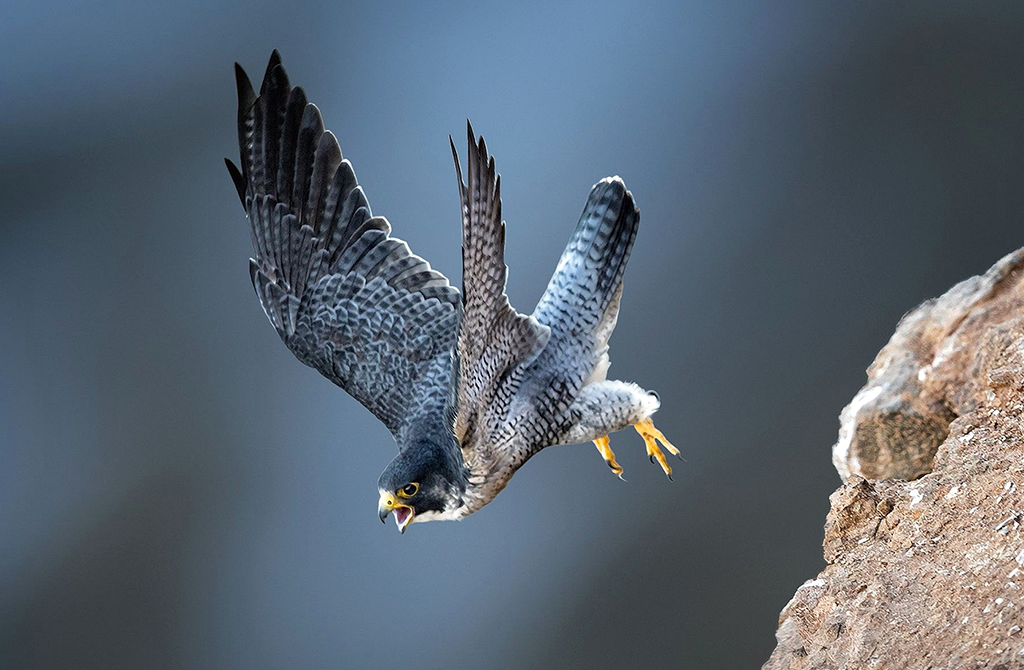 The slowest bird is considered to be a woodcock. Its flight speed is only 8 km / h. it lives in the forests of the temperate and subarctic climate zone. The main food of woodcocks is earthworms, which do not need to fly fast to get them, and the protective camouflage color helps them hide from predators and hunters.
The slowest bird is considered to be a woodcock. Its flight speed is only 8 km / h. it lives in the forests of the temperate and subarctic climate zone. The main food of woodcocks is earthworms, which do not need to fly fast to get them, and the protective camouflage color helps them hide from predators and hunters.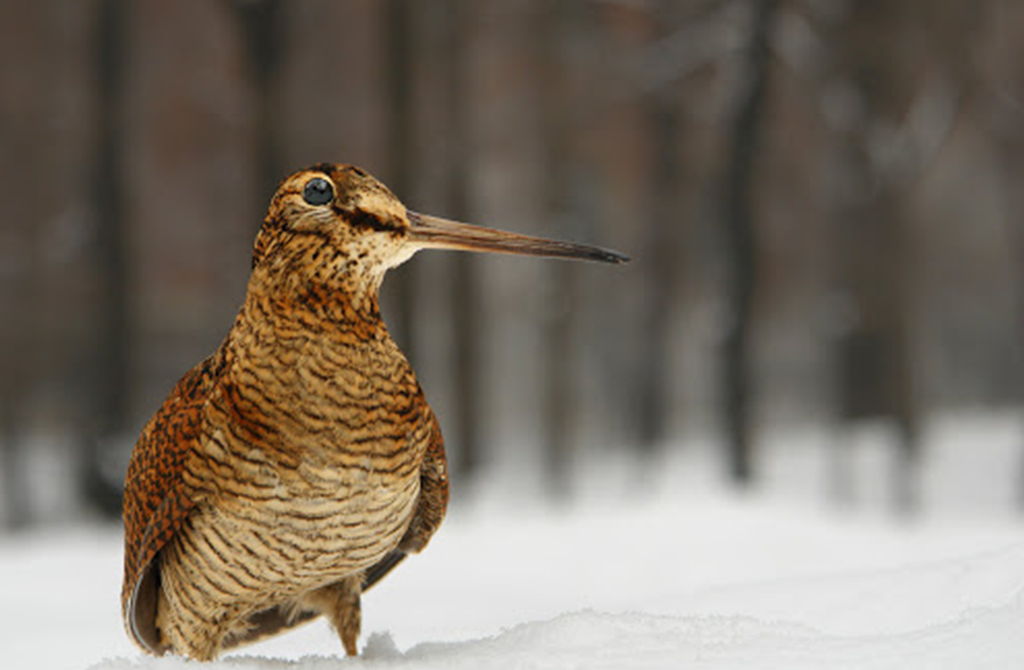
Under water
The fastest fish on the planet is a sailboat. This large fish, up to 3.5 m in length, lives in tropical and subtropical seas and in the waters of the temperate zone. The sailboat is able to accelerate up to 110 km / h. this is helped by a sharp bone growth on the nose, which literally rips up the water and creates swirls around its body - turbulence that increases the speed of movement. In addition, these fish do not have a swimming bladder, since at high speeds the gas exchange system would not be able to maintain optimal pressure in it. A distinctive feature of the appearance of a sailboat that gave it its name is a fin-sail that stretches along the back. When swimming fast, the fish folds it to give the body a streamlined shape, and opens it only when it turns sharply.
A distinctive feature of the appearance of a sailboat that gave it its name is a fin-sail that stretches along the back. When swimming fast, the fish folds it to give the body a streamlined shape, and opens it only when it turns sharply.
The slowest swimming inhabitant of the ocean is the seahorse. It is even listed in the Guinness book of records. This cute toy-like fish is found in tropical and subtropical seas. According to various data, there are from 54 to 57 species of seahorses that differ from each other in color and size. There are individuals with a length (or height) of only 2 cm, and there are also 30-cm.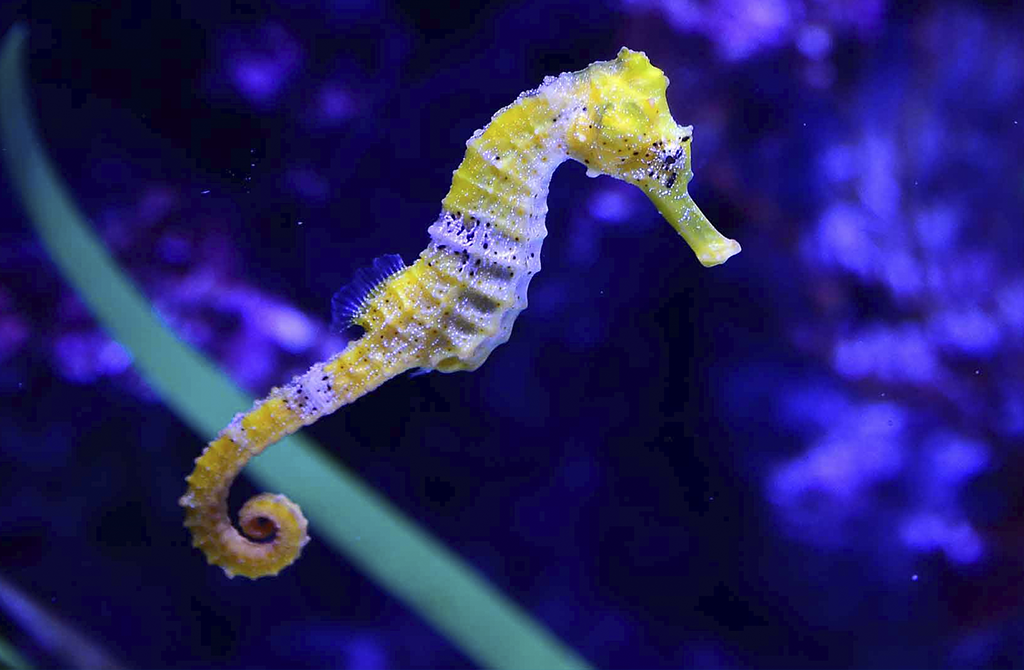 But in any case, they lead the same way of life. Most of the time they spend in the thickets of algae, attached to them with their twisted tail and almost merged with the surrounding environment. They feed on small crustaceans, which they suck in with their outstretched snout. Seahorses have few natural enemies. In addition, they are masters of mimicry, and can change their color depending on the situation. If the horse decides to go swimming, its speed will not exceed 1.5 m / hour. The reason is the vertical position of the body and very small fins.
But in any case, they lead the same way of life. Most of the time they spend in the thickets of algae, attached to them with their twisted tail and almost merged with the surrounding environment. They feed on small crustaceans, which they suck in with their outstretched snout. Seahorses have few natural enemies. In addition, they are masters of mimicry, and can change their color depending on the situation. If the horse decides to go swimming, its speed will not exceed 1.5 m / hour. The reason is the vertical position of the body and very small fins. Despite this difference in appearance and lifestyle, both the sailboat and the seahorse are favorite objects for sea hunting. In the case of a sailboat, anglers are attracted by the impressive size of the prey and the adrenaline of the chase. Seahorse is often used as a material for the manufacture of Souvenirs and delicacy for gourmets.
Despite this difference in appearance and lifestyle, both the sailboat and the seahorse are favorite objects for sea hunting. In the case of a sailboat, anglers are attracted by the impressive size of the prey and the adrenaline of the chase. Seahorse is often used as a material for the manufacture of Souvenirs and delicacy for gourmets.
Author: Maria Astakhova
Read more
July 31, 2024
April 12, 2024
April 5, 2024